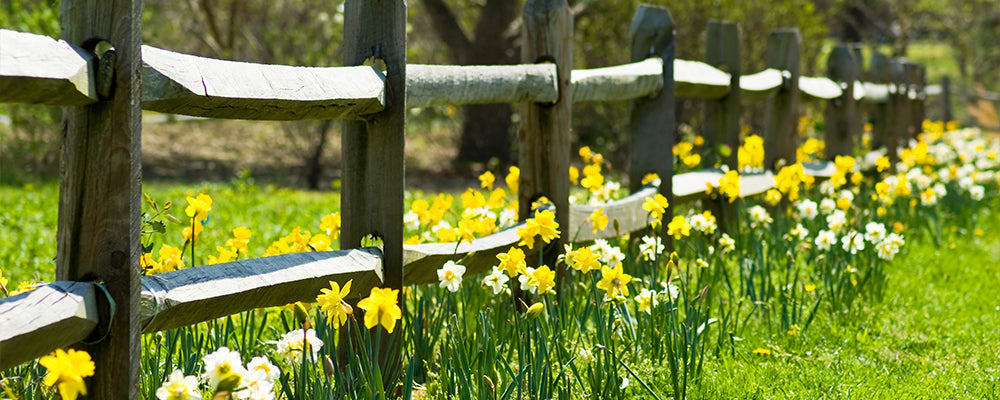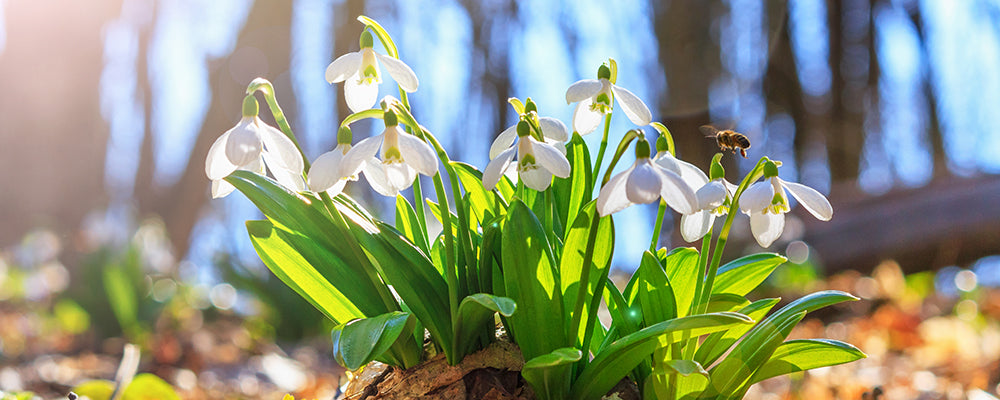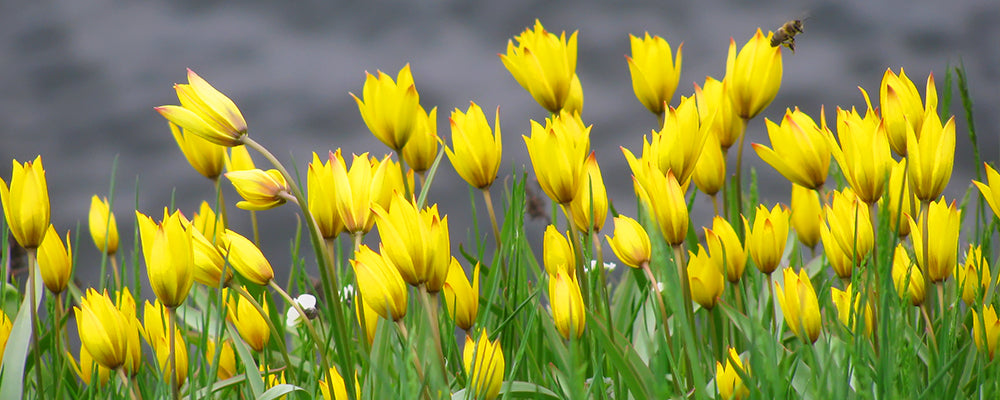Naturalizing: What It Means, and Why It's Important
Posted by Brent & Becky's Admin on


I haven't had a “lawn” in a long time, and I'm glad to see others are starting to do the same. The difference between a lawn and a yard is typically lawns are highly manicured and fertilized, and a yard is just an area of random grass. And, as far as I see it, a monoculture of grass doesn't do us, or our pollinators, all too much good—I'd rather see that space teeming with plants and flowers. While many of the plants growing in my yard are naturally-occurring, many are ones that have naturalized in my landscape over time. We often point out plants that naturalize well in our catalogues, but I've noticed this term is often misunderstood. I thought it might be helpful to take some time to explain what naturalizing really means, why it matters, and which plants do it best.
What Does "Naturalizing" Mean?
By definition, a naturalized plant is a plant that is not native, but that reseeds, spreads, and attracts pollinators all the same. These plants are not the same as perennials, which return year after year but rarely, if ever, set seed.

Daffodils: A Case Study in Naturalizing
Many naturalized plants were brought here by European migrants, where the climate is comparable. Back in those days, British ladies figured out that you could bring dormant plants on the long journey across the ocean. One such plant was Narcissus pseudonarcissus, the Wild Daffodil. These plants were capable of self-pollinating, so the local insect population wasn't needed for the plant to reproduce and flourish in the United States. These Daffodils managed to naturalize very successfully, particularly here in the Gloucester, VA area, where they grow in abundance.
However, this plant wasn't necessarily native to Britain to begin with. It's believed the plants were originally brought to the United Kingdom by the Romans, where they subsequently naturalized and became part of the local scenery. Whether someone else brought them to Rome years earlier is hard to say!
Role of Naturalizing Plants in the Landscape
Nature thrives on diversity and balance. A variety of plant species supports an even larger array of wildlife by providing the food and shelter sources needed for survival. Naturalized plants, by definition, support biodiversity by providing pollinators with pollen and adapting to the surrounding environment. By behaving like native plants, these plants can thrive within the landscape with little maintenance, and eventually replenish the soil as they complete their life-cycles.
Brent's Favorite Naturalizers
There are many ways to incorporate naturalizers into the landscape; some plants do well in beds and borders, and others are nice for adding some color and diversity to a traditional lawn. Here are a few I'm particularly fond of that you can find in our fall-planted catalogue.

Chionodoxa: This fun little bulb comes in a range of pretty pastel colors like periwinkle blue, baby pink, and cream. However, be mindful when selecting Chionodoxa cultivars if you're looking for naturalizing varieties! The best naturalizers are the cultivars that are fairly shade-tolerant; they tend to be the most visited by pollinators. These short ‘n sweet flowers are excellent for brightening up lawns. Heights range from under 6" up to 1', winter-hardy to zones 3-8.
Allium flavum: Alliums naturalize so readily they can get a little out of hand! The smell of these ornamental onions turns off the critters, so by the time they set seed, there's plenty to go around. This cultivar is among the best naturalizers and does especially well in climates with cool weather and hot, dry summers. Reaching heights of 10"-12", winter-hardy to zones 5-8.

Galanthus: I'm so fond of this plant, which is charmingly nicknamed "Snowdrops." A sweetly fragrant spring bloomer, this beauty attracts pollinators and looks wonderful paired with most other flowers. Galanthus naturalizes very well in the northeastern and northwestern states. 4"-5", winter-hardy to zones 3-8.
Ipheion: Ipheion is one of the best naturalizers, and it's absolutely adorable for decorating the lawn. Nicknamed "Star Flower," its namesake shape is lots of fun to find nestled between the grass blades. The flowers smell lovely unless you crush them, which releases a pungent "garlic breath" scent. For this reason, critters tend to stay away from them! 2"-4", winter-hardy to zones 5-9.

Tulipa sylvestris: Many tulip cultivars can naturalize, but they require plenty of patience. If you leave the whole flower and superior ovary, they will enlarge and set seeds, but it can take 5-7 years from seeds to blooms. This woodland variety naturalizes much more readily, and while not as showy as other tulip cultivars, it's a charmer with great fragrance. 8"-12", winter-hardy to zones 3-8.
Ornithogalum: Nicknamed Silver Bells or Star of Bethlehem, this is another excellent naturalizer that is conveniently critter-resistant. The showy flower spikes can be picked for lovely bouquets and arrangements. This one is somewhat underrated, but it's likely to become one of your favorites. 12"-15", winter-hardy to zones 5-8.
Happily, this is only a small sampling of the naturalizing plants in our lineup for the fall. Remember, these are plants that reward patience. By planting a few at the end of this season, you'll be giving your future self a gift that appreciates (and will be appreciated!) the longer it matures.
Share this post
- Tags: allium, Brent and Becky's, brent and becky's blog, bulbs, care, chionodoxa, daffodil, daffodils, flowers, galanthus, garden, gardening, gardening tips, grow, ipheion, narcissus, native plants, natural, naturalizing, planting, planting bulbs, plants, pollinators, tulips, yard


